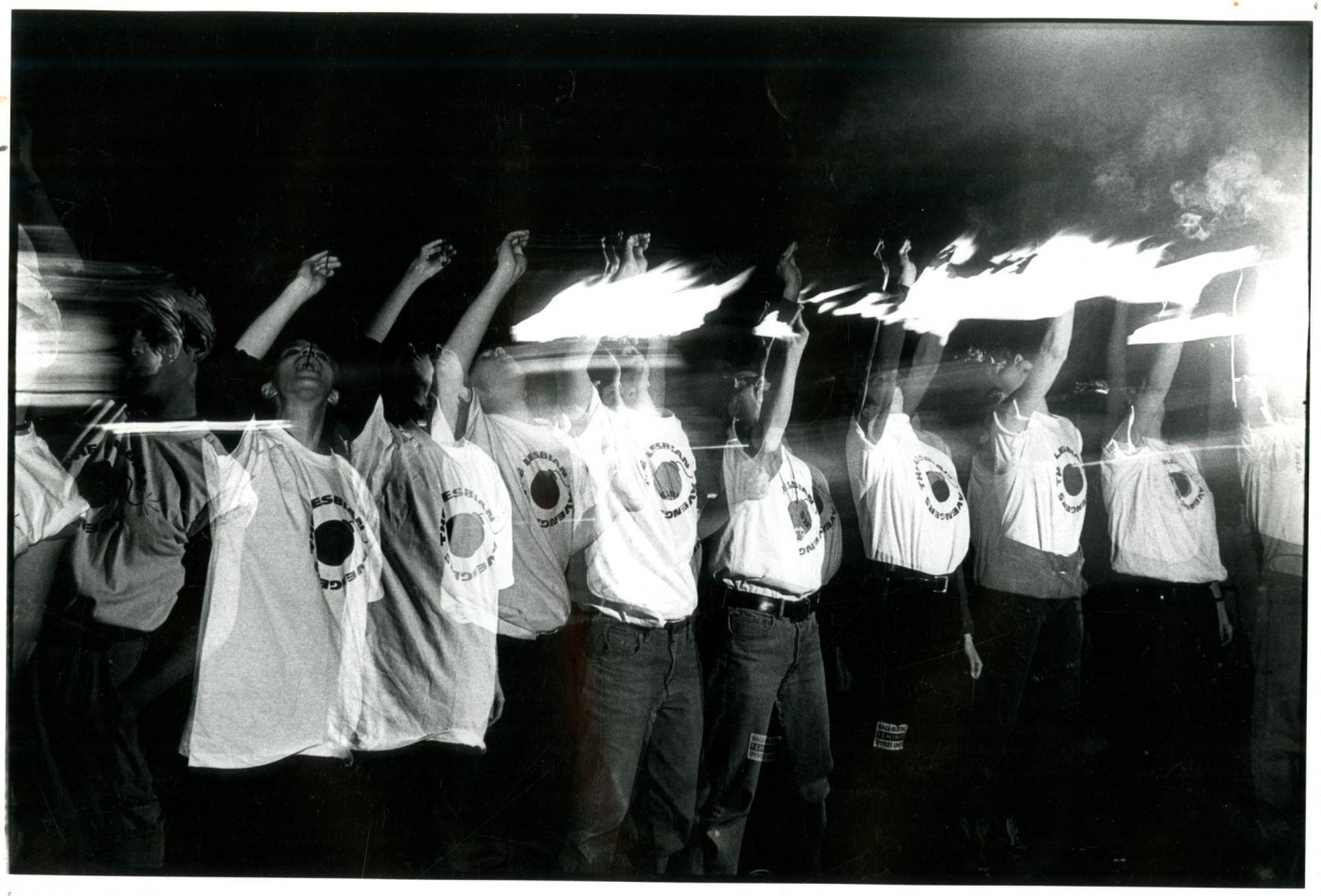- youtube
- bluesky
- Home
- About
- Costume Journal
- Membership
- Conference & Events
- Grants & Awards
- News & Social
Billboard Bodies: Dyke Theory and the Lesbian T-shirt
I applied for the Yarwood Grant to assist in the research for my MA dissertation ‘Billboard Bodies: Dyke Theory and the Lesbian T-shirt.’ Throughout my studies, I have consistently researched lesbian fashion history in various forms, and I took my recently submitted dissertation as a chance to further this research. By focusing on the lesbian t-shirt – that is to say, t-shirts worn by lesbian activists with lesbian slogans printed on them – I was focusing on the way that lesbians have made themselves visible by the clothes they wear. I explored the personal, cultural and political meanings that occur when clothing, activism and lesbian existence meet.
To analyse lesbian t-shirts I needed to look at some t-shirts themselves. My first port of call was the online archive Wearing Gay History, which was helpful to me in that I could access photographs of t-shirts in archives around the world. However, while I was happy to analyse these t-shirts semiotically, I was also keen to study them as material objects. Because of this, I planned to visit archives within the UK and look at the lesbian t-shirts that they housed with my own eyes. This is why I applied for the Yarwood Grant; it would allow me financial assistance in my plans to visit the Bishopsgate Institute in London and the Lesbian Archive at the Glasgow Women’s Library.
2020 has been, however, not what anyone expected. While archives began gradually opening to researchers again as I neared my dissertation deadline, by that point I had already written almost the entire thing without the hands-on research that I had planned to do. Because of this, my case studies were all from online sources. I did find that there were ways in which I was still able to analyse these materially. There was a photograph of one t-shirt in particular, which was painted by hand by a lesbian artist, Boudykke. I analysed it as a hand-crafted object – something that exists as not just visual, but as something that was touched, changed and worn, existing within the history of craft and lesbian realities. It remained partially a mystery to me, though, as I only had one photograph of it. This is why visiting archives and t-shirts in person is still research that needs to be done, even if my dissertation did take a slightly different turn.
Throughout the research and writing of ‘Billboard Bodies’ my feeling that lesbian fashion history needed a space of its own only grew stronger. When I discovered that I had won the Yarwood Grant my confidence in the research that I was doing and that I planned to do increased. Because of this, my dissertation submission is not the end of my relationship with lesbian t-shirts. I still intend to use the grant to undertake my planned research trips, but when it is safe and possible to do so. As I have now finished my MA, I will use the research I do on these trips, combined with the research I have already done, to write a submission for a journal. I have also started a lesbian fashion history blog, www.dressingdykes.com, where I would love to share further research online.
Image gallery
24th April 1993. Washington, DC, USA.

24th April 1993. Washington, DC, USA.